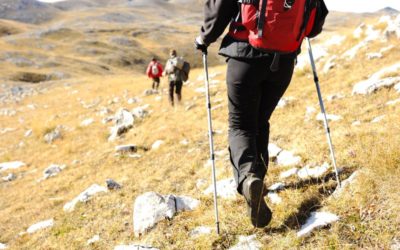Are you ready to embark on an adventure that will leave your mind and body feeling refreshed? If so, then day hiking might be the perfect activity for you. In this blog post, we’ll cover everything you need to know about packing for a successful day hike. From choosing the right gear to planning your route, we have all the tips and tricks you need to ensure a safe and enjoyable experience in nature.
Introduction to Day Hiking
Day hiking is a great way to explore the outdoors without committing to a multi-day trek. It allows you to get outside and enjoy fresh air and scenery while still having time to return home at the end of the day. Whether you’re new to hiking or are looking to take your skills to the next level, there are several things you should consider before setting out on your first day hike.
What to Pack for a Successful Day Hike
When it comes to packing for a day hike, it can be tempting to overpack. After all, you want to make sure you have everything you need to stay comfortable and safe throughout your journey. However, carrying too much weight can quickly become exhausting and even dangerous if you’re not used to it. Here are some essentials you’ll want to include in your pack:
1. Sturdy shoes with good traction – You’ll want to choose footwear that provides ample support and protection for your feet. Look for shoes with deep treads and waterproof materials to keep your feet dry during wet conditions.

2. Appropriate clothing – Depending on the weather and terrain, you may need different types of clothing. Avoid cotton as it retains moisture and instead opt for quick-dry fabrics like polyester or nylon. Layers are key so you can regulate your temperature as needed.
3. Water bottle or hydration system – Make sure you bring enough water to last the duration of your hike plus extra in case of emergencies. Consider investing in a hydration system such as a bladder or water filter to save space in your pack.

4. Snacks and food – Bring high-energy snacks like trail mix or energy bars to help fuel your body during your hike. Also, bring lunch or dinner depending on how long your hike will be.
5. Navigation tools – A map and compass are essential for navigating unfamiliar territory. Consider bringing a GPS device or app on your phone as well just in case.
6. First aid kit – Be prepared for minor injuries by bringing bandages, antiseptic wipes, and pain relievers.
Choosing the Right Gear and Equipment
In addition to the basics listed above, you may also want to consider bringing additional equipment to enhance your day hike. Some popular items include:
1. Trekking poles – These can provide added stability and support on uneven terrain.
2. Sunscreen and insect repellent – Protect yourself from sunburns and bug bites.
3. Headlamp or flashlight – For those who plan to hike into the evening hours or in low light conditions.
4. Camera or binoculars – To capture stunning views or spot wildlife.
Planning Your Route and Itinerary
Before heading out on your day hike, it’s crucial to plan your route and itinerary carefully. Research the area you’ll be hiking in and look for maps or guides that detail the trails and landmarks. Consider factors such as distance, elevation gain, and difficulty level when selecting your route. Additionally, check the weather forecast and dress accordingly. Finally, let someone know where you’ll be going and when you expect to return.
Safety Tips and Precautions
Hiking can be a fun and rewarding activity, but it’s important to always prioritize safety. Here are some tips to follow:
1. Stay on designated trails and avoid off-trail exploration.
2. Keep an eye out for potential hazards such as loose rocks or fallen trees.
3. Always carry enough water and food to sustain yourself throughout your hike.
4. Know your limits and don’t push yourself beyond them.
5. Let someone know where you’re going and when you expect to return.
Conclusion
Whether you’re a beginner or experienced hiker, day hiking offers a unique opportunity to connect with nature and challenge yourself physically. By following these tips and packing appropriately, you can ensure a safe and enjoyable day hike experience. So lace up your boots, grab your pack, and hit the trail!



